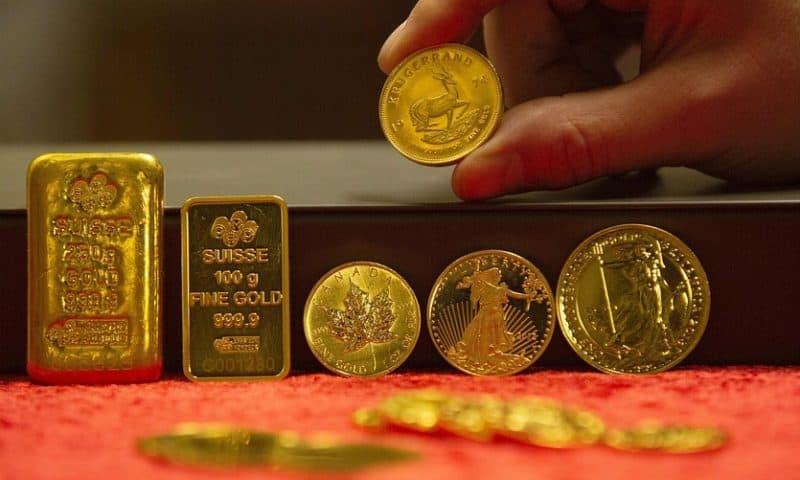Investors continue to eye trade developments ahead of tariff deadline
Gold prices settled higher Wednesday, supported by uncertainty about international trade policy, then seesawed in electronic trading after the Federal Reserve left its benchmark interest rate unchanged, as expected.
After gold futures settled for the session, the Fed said it would leave its short-term fed funds rate at a range of 1.5% to 1.75%.
Shortly after the Fed news, February gold GCG20, +0.27% pulled back to $1,473.10 an ounce in electronic trading, then rebounded to $1,477.50 ahead of the Fed press conference. Prices had ended the session up $6.90, or 0.5%, at $1,475 an ounce.
Investors will closely watch the central bank’s press conference at 2:30 p.m. Eastern for clues on the outlook for monetary policy.
There was “no surprise” in the Federal Open Market Committee’s decision to keep interest rates consistent into 2020, Jeff Wright, executive vice president of GoldMining Inc., told MarketWatch. “The FOMC statement is pretty much the same as previous guidance.”
The FOMC’s so-called dot-plot, “another tool in guidance, indicates stability in rates through 2020 with the current data showing potential to raise rates in 2021,” he said. “While this could disappoint gold markets and investors; it is just based on data up to today. While not a dovish statement, not hawkish either just recognizes rates do not remain at one level forever.”
“Gold could trail off a little, but should hold $1,450-$1,460, and could return towards $1,500 in the near term as we get into 2020,” said Wright. The “China trade deal is still a risk; Brexit is an unknown but the impeachment trial most likely in Jan. 2020 is not relevant for gold markets right now.”
Developments on the China-U.S. trade front have served as an important catalyst for precious metals, keeping the asset trading within a range between $1,470 and about $1,500 over the past several weeks.
Optimism that a trade deal can be achieved as a Sunday deadline for a further increase in China import duties looms, has helped to put pressure on bullion, however.
“Gold’s near-term performance is expected to remain suppressed, as long as a flare-up in global trade tensions remains unlikely and investors continue to expect a US-China trade deal,” Han Tan, market analyst at FXTM, told MarketWatch. “Still, seasoned investors would only be too aware of the fact that the situation remains fluid and unpredictable, with gold bulls standing by to push prices higher on any sign of trouble out of US-China negotiations.”
White House advisers Larry Kudlow and Peter Navarro have both indicated that tariffs scheduled to hit Chinese goods on Dec. 15 are “still on the table,” following a report from the Wall Street Journal that said both parties were bracing for a delay of a tariff increases on China goods on Sunday, which would be read as an escalation of tensions.
On top of that, the U.K.’s general election is scheduled for Thursday, which could help to determine the course of Britain’s exit from European Union, but a narrowing margin in recent polling for Prime Minister Boris Johnson and his Conservative Party has injected some doubt into the outcome.
“For now, the narrowing the UK election polls is given rise to Brexit uncertainty and is keeping a small bid under gold,” wrote Stephen Innes, chief Asia market strategist at AxiTrader, in a daily research note.
Among other metals, March silver SIH20, +0.60% added 14.7 cents, or 0.9%, to end at $16.849 an ounce, following a 0.4% gain in the last session.
March copper HGH20, +0.30% tacked on 0.9% to $2.7895 a pound. January platinum PLF20, +0.28% rose 1.8% to $939.50 an ounce and March palladium PAH20, +0.43% climbed 0.9% to $1,885.10 an ounce, poised for a fresh record settlement, buoyed by worries that power outages in South Africa, a key producer of platinum group metals, will disrupt production of the metals.

